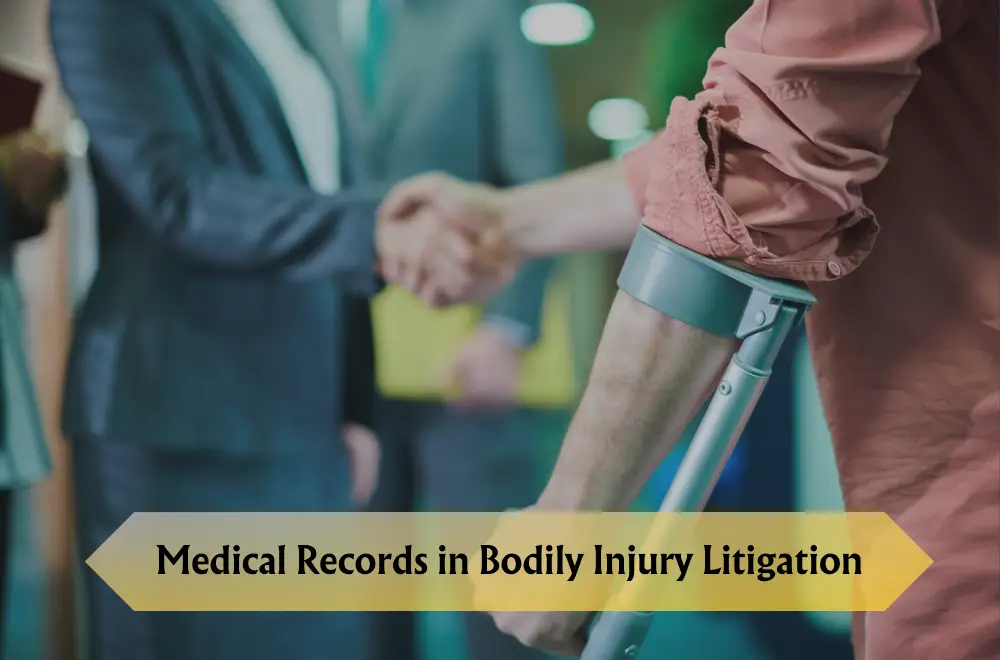Medical records play a crucial role in bodily injury litigation as they provide invaluable information about the extent of injuries, the treatments administered, and the overall impact on the injured party. In order to effectively utilize medical records in litigation, it is essential to understand their significance, how to obtain and review them, and how to leverage them to strengthen your bodily injury case. This comprehensive guide will provide you with the necessary insights and tips to effectively use medical records in your litigation strategy.
Understanding the Role of Medical Records in Bodily Injury Litigation
Medical records serve as a vital piece of evidence in bodily injury cases. They provide objective documentation of the injuries sustained, the medical treatments received, and the long-term effects on the injured individual. These records can help establish the causal link between the accident and the injuries, demonstrate the severity of the injuries, and support the calculation of damages.
Medical records typically include various documents, such as:-
Initial medical assessment:
This includes the details of the initial evaluation following the injury, documenting the initial symptoms, and the initial diagnosis made by the healthcare professional.
-
Treatment records:
These records outline the treatments administered to the injured party, including surgeries, medications, physical therapy, and any other medical interventions.
-
Progress notes:
These notes document the ongoing progress and changes in the injured person's condition throughout their recovery period.
-
Diagnostic tests:
This includes any imaging scans, X-rays, MRIs, or laboratory tests conducted to diagnose or monitor the injuries.
-
Consultation reports:
If the injured party sought opinions from other medical professionals, these reports can provide additional insights and opinions on the injuries and their impact.
-
Discharge summaries:
These documents provide a summary of the treatment received, the progress made, and any recommendations for ongoing care or follow-up treatment.
Tips for Obtaining and Reviewing Medical Records for Litigation Purposes
Obtaining and reviewing medical records can be a complex and time-consuming process. However, it is an essential step in building a strong bodily injury case. Here are some tips to help you effectively navigate this process:
-
Obtain signed HIPAA authorization
In order to access the injured party's medical records, you will need their authorization. Ensure that you have a signed HIPAA (Health Insurance Portability and Accountability Act) authorization form that complies with applicable laws and regulations.
-
Identify relevant healthcare providers
Determine the healthcare providers involved in the injured party's treatment, including hospitals, clinics, specialists, and therapists. Contact each provider to request the relevant medical records.
-
Specify the time period
Clearly specify the time period for which you are requesting medical records. This helps to ensure that you receive all the relevant documents pertaining to the injuries sustained in the accident.
-
Organize and keep track of records
As you receive medical records from different providers, organize them systematically and keep track of the documents you have received. This will help you stay organized and easily locate specific records when needed.
-
Thoroughly review the records
Carefully review each medical record to understand the injured party's condition, the treatments administered, and any recommendations made by the healthcare professionals. Look for any inconsistencies, gaps, or potential issues that may impact your case.
Leveraging Medical Records to Strengthen Your Bodily Injury Case
Once you have obtained and reviewed the medical records, it's crucial to leverage them effectively to strengthen your bodily injury case. Here are some strategies you can employ:
-
Establishing causation
Medical records provide vital evidence linking the injuries sustained to the accident. Look for detailed descriptions of the injuries and the healthcare professional's assessment of their cause. This information can be pivotal in establishing the defendant's liability.
-
Proving severity of injuries
Medical records should contain detailed information about the extent and severity of the injuries sustained. Use this information to demonstrate the impact of the injuries on the injured party's life, including their ability to work, engage in activities, and enjoy a normal quality of life.
-
Demonstrating ongoing treatment
If the injured party requires ongoing medical treatment, the medical records can demonstrate the ongoing costs and the long-term impact on the injured party. This can be crucial in calculating the damages owed to the injured party.
-
Expert testimony
In complex bodily injury cases, medical records can be the foundation for expert testimony. Medical experts can provide their professional opinion based on the medical records, further strengthening your case.
-
Rebutting opposing arguments
Carefully analyze the medical records to identify any potential inconsistencies or opposing arguments that may arise. Anticipate the defense's strategy and use the medical records to refute any unfounded claims or arguments.
In conclusion, medical records serve as an invaluable tool in bodily injury litigation. Understanding the role of medical records, effectively obtaining and reviewing them, and leveraging them to strengthen your case are key steps in maximizing the chances of a successful outcome. By following this comprehensive guide, you can ensure that you make the most of the medical records available to you in your bodily injury litigation.

